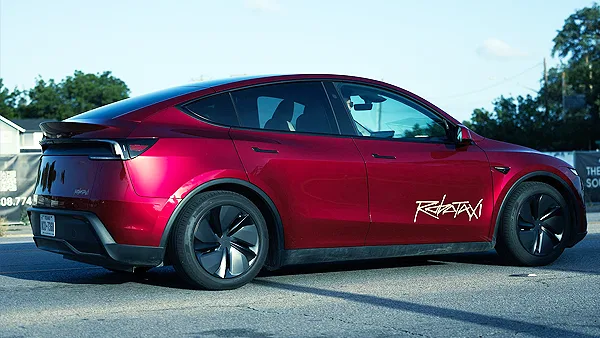Tesla has officially begun offering public rides in its driverless Model Y SUVs in Austin, Texas, marking a major step forward in the company’s decade-long ambition to commercialize autonomous vehicle technology.
This rollout is a significant real-world test of Tesla’s unique approach to full autonomy relying solely on cameras and end-to-end artificial intelligence, unlike competitors such as Waymo, which use lidar and other sensor suites.
Robotaxi Pilot Begins with Limited Access
Over the weekend, Tesla invited a select group of early users to test its new robotaxi service through a dedicated mobile app. The service charges a flat fee of $4.20 per ride a number likely chosen for its symbolic association with Tesla CEO Elon Musk.
These rides are currently limited to South Austin, with around 10 Model Y vehicles operating in a defined area. Though fully driverless in function, each car includes a Tesla employee in the front passenger seat acting as a “safety monitor” a move signaling both caution and compliance.
The pilot service operates daily from 6:00 a.m. to midnight, with potential disruptions during bad weather. Tesla has also published a new section on its website outlining ride policies, app usage instructions, and basic user guidelines.
Privacy, Safety, and Oversight
While Tesla claims the service is autonomous, questions remain about safety and transparency. During test runs, observers reported unpredictable braking behavior from the driverless cars particularly near police vehicles highlighting the challenges of real-world AI behavior in traffic environments.
Tesla insists the vehicles use a new “unsupervised” version of its Full Self-Driving software, and while the cars are not actively monitored via the cabin camera during rides, Tesla says it will be activated in emergencies or after rides to assess readiness for the next passenger.
Notably, Tesla is not using its futuristic Cybercab models unveiled in late 2024, opting instead for production-ready 2025 Model Y units.
Transparency Questions and Information Control
Ahead of the launch, Tesla maintained an unusual level of secrecy. The company reportedly attempted to block public information requests from both the Texas Department of Transportation and the City of Austin, claiming that the data involved trade secrets and proprietary information.
Much of the rollout information has surfaced not through official channels, but via enthusiastic Tesla supporters on social media, many of whom were among the first to receive access to the service.
Role of the Human ‘Safety Monitor’
The role of Tesla’s in-car employee remains vague. While these safety monitors are not expected to intervene in driving tasks, they may have access to an override mechanism or “kill switch” in case of a malfunction.
This differs from industry norms, where companies like Waymo traditionally placed safety drivers behind the wheel during early-stage testing not during public operations.
Strict Content Sharing Rules
Although Tesla encourages users to document their experiences, it has placed firm restrictions on what can be shared publicly. Users risk suspension if they post content that violates Tesla’s usage rules, which include bans on smoking, drinking, drug use, and any association with illegal activity during rides.
Relevance for Indian Market
While Tesla has yet to enter the Indian market officially, its progress in autonomous driving remains closely watched by Indian mobility experts, policymakers, and EV enthusiasts. India’s unique road conditions and regulatory landscape pose different challenges, but Tesla’s advancements could influence future smart mobility strategies and EV tech adoption in the country.
Internal Celebrations, Mixed Feedback
Tesla employees and executives, including Ashok Elluswamy, head of Tesla’s self-driving program, celebrated the achievement online, calling it the culmination of a decade’s effort. CEO Elon Musk also congratulated the AI and chip design teams for what he described as a successful launch.
However, at least one user reported that Tesla’s remote support team had to intervene during a ride. While the issue was not disclosed, the same user later noted that the ride experience was otherwise smooth.
